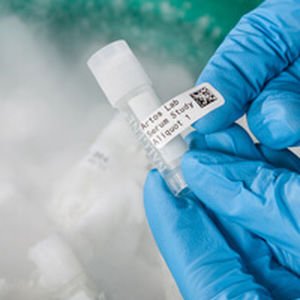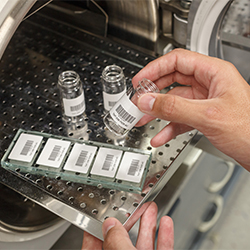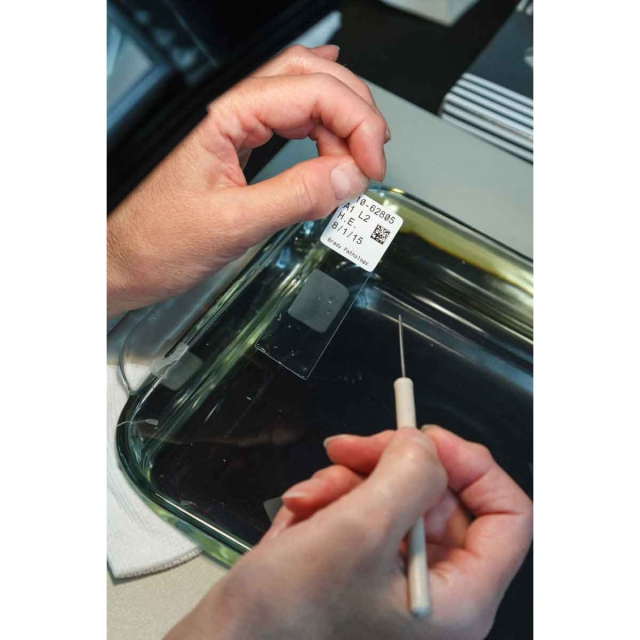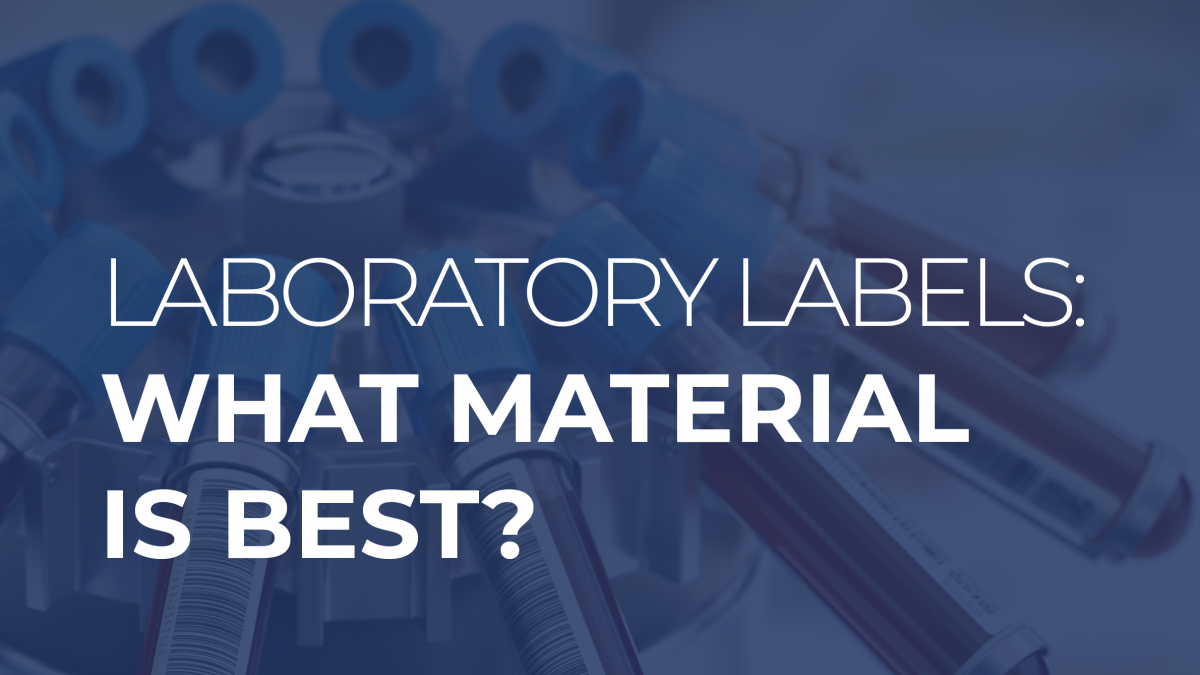Laboratory Labels: What Material is Best?
Laboratory Labels: What Material is Best?
Not every label is suitable for laboratory use. Extreme temperatures alone are enough to cause some labels to peel off. And only the most robust materials can withstand xylene, acetone, and other chemicals used during lab work.
In general, the hazards labels face in the lab can be broken down into three categories: high temperatures, freezing temperatures, and chemicals. Thankfully, there are a host of labeling solutions designed with these needs in mind.
Cryogenic Freezer Labels
If you’re looking for labels that can endure the low temperatures required for sample storage and transport, polypropylene is a popular and economical option. Polypropylene labels are particularly well-suited for low-temperature labeling. Polypropylene labels can endure short-term exposure to dry ice and liquid nitrogen, which makes them appropriate for sample storage and transport. Also, polypropylene labels conform well to small, curved containers like test tubes and cryovials.

Cryogenic labels adhere to frozen or frosted surfaces.
While polypropylene performs well in low temperatures, polyester is the real workhorse of extreme temperature labeling. Polyester labels are preferred for sample labeling in ultra-low-temperature freezers, where they can endure up to -313°F.
It’s important to note the optimal application temperature of your labels. Some cryogenic adhesives work best when applied at room temperature. Other freezer labels can be applied directly to frozen substrates without the risk of peeling or falling off.
Heat-Resistant Labels
Polypropylene labels can endure temperatures up to 150°F, which makes them appropriate for most general-use lab labeling. Polypropylene labels are perfect for labware and other equipment that will be exposed to heat and steam in an autoclave.

Most polypropylene lab labels are appropriate for use in an autoclave.
However, from oven to autoclave, no label material offers better heat resistance than polyester. Polyester labels work best for samples that will be exposed to extreme heat, such as that of a water bath.
Chemical-Resistant Labels
Laboratory chemicals such as xylene, acetone, or even alcohol can wreak havoc on your labels. Any labware or sample container that comes in contact with chemicals and solvents should have a chemical-resistant polyester label.

Microscope slide labels endure harsh chemicals, like those used in the staining process.
Aside from excellent temperature resistance, polyester labels are also resistant to most laboratory chemicals. Because they are resistant to chemicals used in the staining process, polyester labels are perfect for marking microscope slides.
Conclusion
In general, polypropylene and polyester are the best label materials for use in the lab. Polypropylene is an excellent general-use specimen label, while polyester is excellent for specialized applications such as slide staining.
Ready to find your solution? Have a chat with our label experts.
